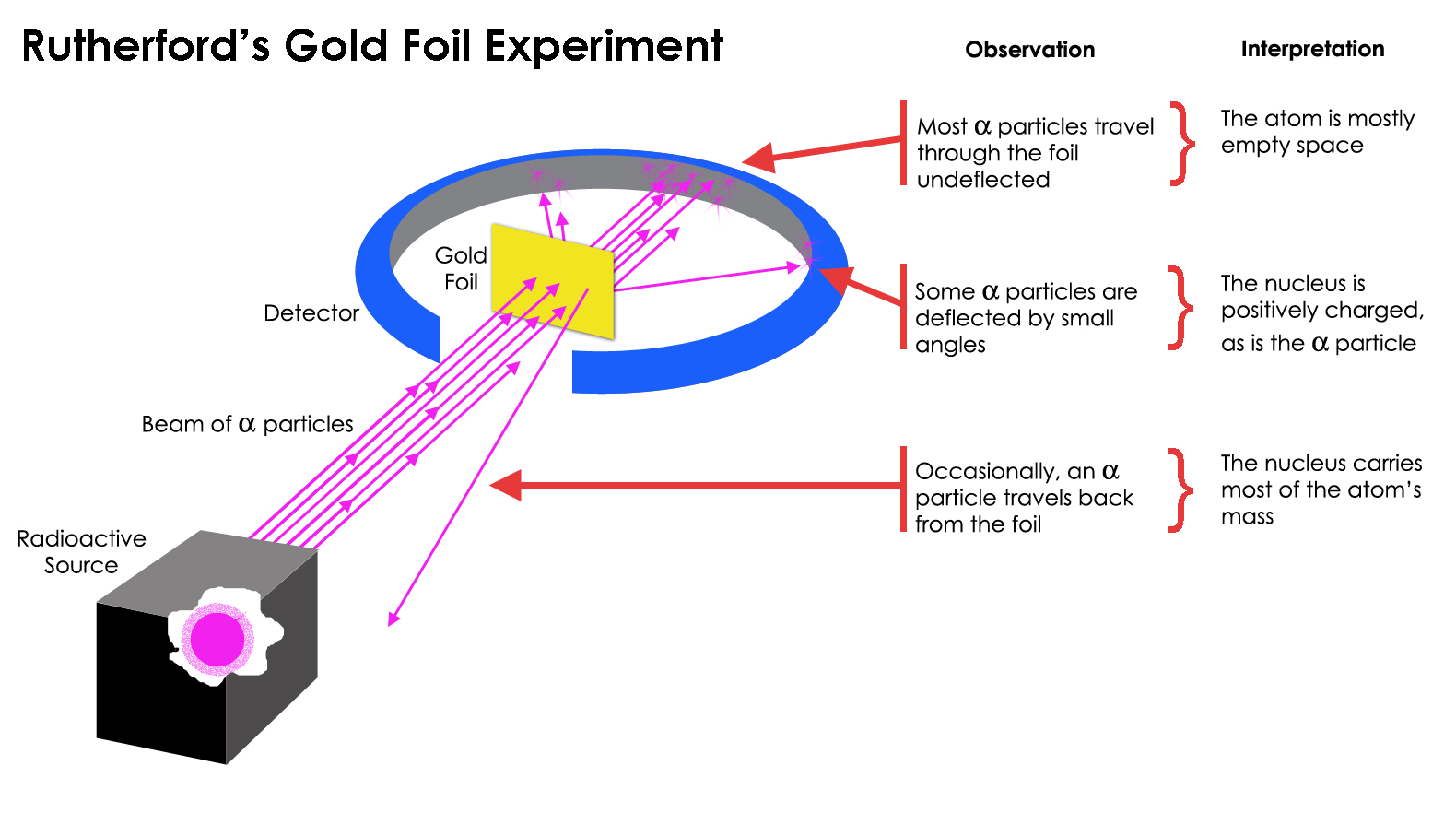How did Rutherford's gold foil experiment differ from his expectations?
1 Answer
He expected ALL the rays to pass through - only some have bounced back.
Explanation:
Imagine a wall made of air. Now imagine you have a tennis ball and you decide to throw it against that wall. What do you expect? Obviously the ball being lost somewhere out there in the open space. But what if, the ball bounces back to you instead?
It is the same thing with the Rutherford experiment. Since the previous atomic model (the Thomson model) argues that an atom is a sphere of positive charge with the negatively-charged electrons scattered like "raisins in a pudding", Rutherford and his students fully expected that an
In the case of the experiment, some of the
The experiment proves a number of things:
(1) that an atom is mostly consist of empty space (because the most of the rays went straight through)
(2) that something very solid (nucleus) is inside every atom to make some of the rays "bounced back"
(3) that the nucleus is positively charged to make some of the rays be deflected at odd angles (like repels like, as in a magnet).



